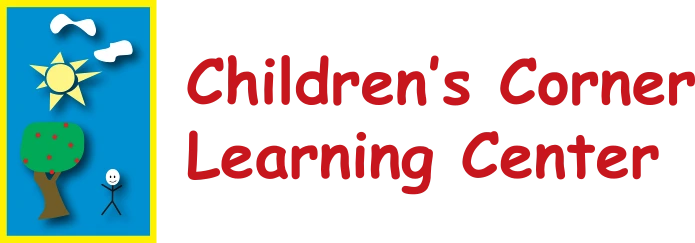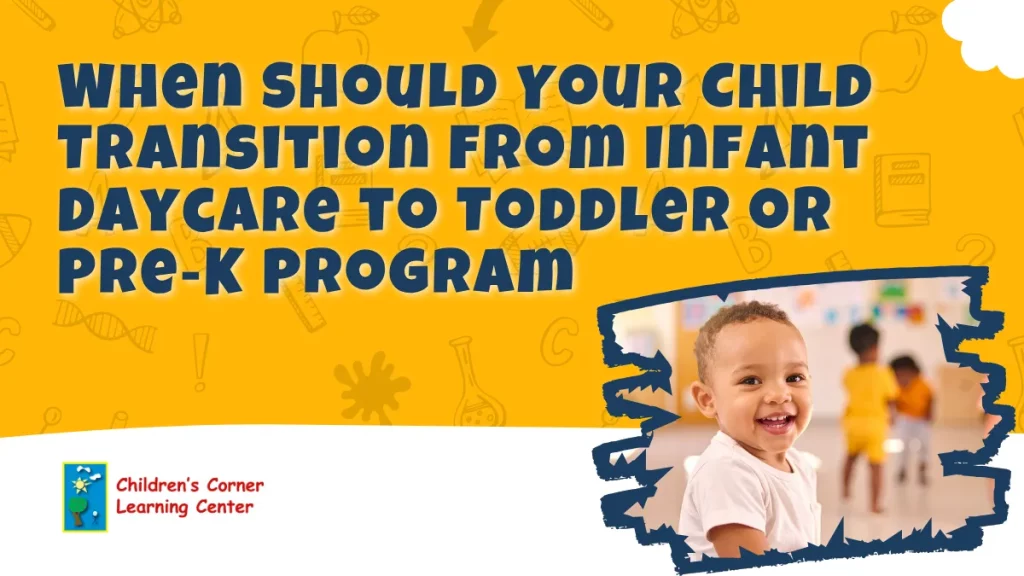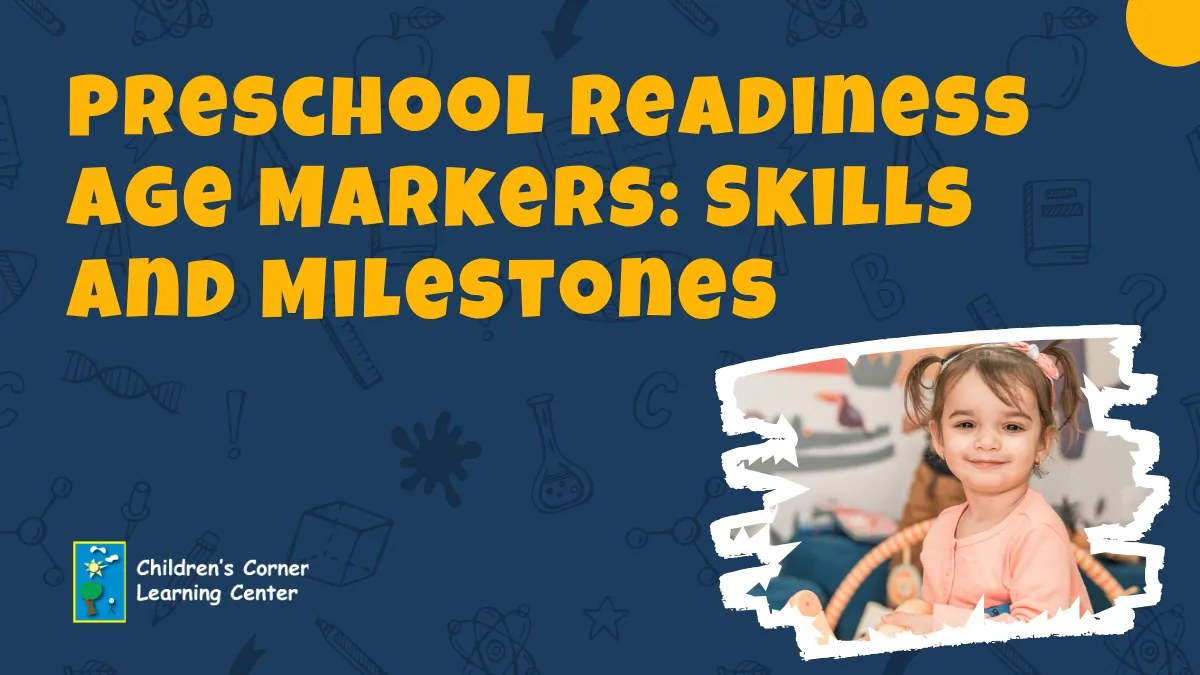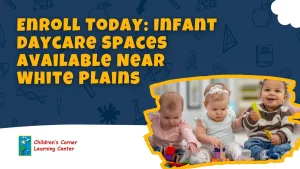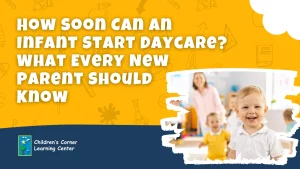When to move from infant daycare is a decision guided by development, routine stability, and classroom fit. Readiness indicators include steady walking and climbing, longer wake windows, growing language and imitation, interest in peers, and increasing independence with feeding and transitions. Families may also notice nap pattern changes or need more complex activities and teacher-led small groups.
Programs typically recommend a move when the toddler classroom’s ratios, materials, and curriculum better match these needs. The process should be planned, with visits, brief trial periods, and aligned routines to reduce stress. Partnering with teachers ensures timing supports comfort, safety, and continued growth.
Signs Your Infant Is Ready for a Toddler Program: Developmental Cues
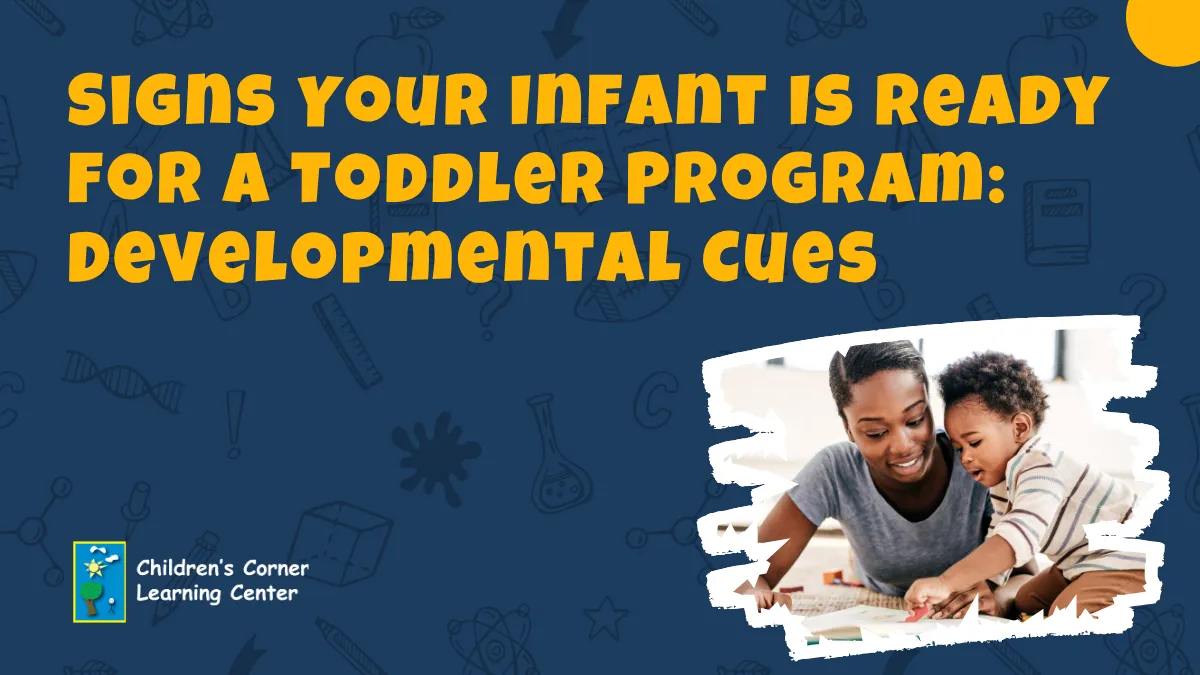
Growing skills, longer wake windows, and changing interests indicate that a toddler classroom may best fit. The following cues help families and teachers determine the timing and plan a smooth move.
Gross Motor And Coordination
Steady, confident movement is a primary indicator. Children who walk independently, attempt short climbs, and squat to pick up objects are ready for larger spaces and more active centers. Increasing balance and stamina support outdoor play, short obstacle paths, and guided movement games that are common in toddler rooms.
Communication And Social Engagement
Language and social interest expand quickly. Children begin to use words, signs, or gestures to request items, imitate sounds and actions, and enjoy short songs with motions. Interest in peers grows, with parallel play evolving into simple turn-taking supported by teachers. These behaviors benefit from small-group activities and targeted vocabulary work.
Self-Help Emerging Skills
- Feeding progress: Improved pincer grasp, attempts to use a spoon, and willingness to try varied textures.
- Cup practice: Transitioning toward open-cup or straw use with guided support.
- Diapering cues: Signaling wet or dirty diapers, showing comfort with brief bathroom visits, or interest in routines near the restroom.
- Dressing cooperation: Offering a foot for a shoe or lifting arms for a shirt as coordination improves.
Regulation, Stamina, And Schedule Changes
A shift from multiple short naps to one longer midday rest often aligns better with toddler schedules. Longer wake windows, increased tolerance for short transitions, and the ability to regroup after minor frustrations indicate readiness for the structure and pacing of a toddler’s day.
Cognitive Growth And Play Complexity
- Cause-and-effect: Exploring toys with buttons, levers, or simple tools.
- Problem-solving: Stacking, nesting, and basic shape matching during centers.
- Pretend beginnings: Imitating phone calls, feeding a doll, or role-playing with guidance.
- Attention span: Engaging in brief small-group activities with clear starts and finishes.
Safety, Space, And Classroom Fit
Children who actively explore need zones designed for climbing practice, push toys, and larger block areas. Toddler ratios, materials, and teacher-led routines better support these interests while maintaining close supervision and calm transitions.
Team Decision And Next Steps
Families and teachers review observations, compare schedules, and plan classroom visits. A brief trial morning, followed by a half day, allows caregivers to align routines and confirm comfort. Documenting cues and setting a target date creates a steady, child-centered transition.
Preschool Readiness Age Markers: Skills and Milestones

Preschool readiness is a blend of age, skills, and classroom stamina. Many children begin preschool between 2.5 and 3.5 years, but timing depends on development, program requirements, and family goals. The markers below help families and teachers decide when the preschool environment best fits.
Language And Communication
- Expressive words: Uses short phrases to request, label, and share ideas.
- Receptive understanding: Follows simple two-step directions with visual cues when needed.
- Conversation habits: Takes brief turns, listens to peers, and responds to a teacher’s prompt.
- Vocabulary growth: Names familiar people, objects, colors, and everyday actions.
Social-Emotional Regulation
- Group participation: Joins short circle times and small-group activities with adult support.
- Flexible transitions: Moves between centers with simple cues and visual schedules.
- Problem-solving: Seeks help, uses words or gestures to resolve minor conflicts, and accepts redirection.
- Comfort strategies: Calms with predictable routines, a teacher’s support, or a simple breathing cue.
Motor Skills And Self-Help
- Gross motor control: Runs, climbs low structures, kicks, and throws with basic control.
- Fine motor readiness: Uses a pincer grasp, stacks blocks, strings large beads, and turns pages carefully.
- Feeding independence: Uses a spoon and drinks from an open or straw cup with minimal spills.
- Dressing cooperation: Helps with shoes and simple fasteners and places belongings in a cubby.
Cognitive And Early Academic Foundations
- Attention span: Engages for several minutes at a center and finishes brief tasks.
- Early concepts: Sorts by color or shape, matches simple pairs, and counts a few objects with guidance.
- Symbol awareness: Recognizes common pictures and a few letters in the child’s name.
- Cause-and-effect: Experiments with materials and explain simple results in basic language.
Health, Safety, And Toileting
- Body awareness: Walks safely in a line, stays within assigned spaces, and follows safety cues.
- Hygiene habits: Washes hands with reminders and covers coughs and sneezes.
- Toileting progress: Shows interest in the toilet, stays dry longer, and attempts bathroom routines with support per program policy.
Partnership And Next Steps
- Home-school alignment: Families and teachers compare observations, set two or three goals, and schedule a gradual start.
- Trial experiences: Short visits and phased days confirm stamina and comfort before a full schedule.
These markers create a clear picture of readiness and guide a calm, timely transition into preschool.
Benefits of Toddler Classrooms vs Infant Room: Curriculum, Ratios, and Space
A move to a toddler classroom offers new learning opportunities, more peer interaction, and environments designed for growing independence. The following areas highlight how curriculum, ratios, and space better match emerging skills.
Curriculum And Learning Experiences
- Purposeful themes: Short, age-appropriate units introduce early language, counting, and problem-solving through songs, picture walks, and simple experiments.
- Guided centers: Blocks, dramatic play, art, and sensory stations invite choice while meeting clear goals for communication, cooperation, and motor development.
- Mini-lessons: Brief, predictable group times build attention and vocabulary without overwhelming children.
Ratios, Social Growth, And Teacher Roles
- Lower ratios: Toddler ratios support close supervision while allowing more small-group work and targeted coaching.
- Peer practice: Parallel play grows into simple turn-taking, with teachers modeling language for sharing, asking, and waiting.
- Individual pacing: Caregivers adjust supports so children can try tasks independently, then step in when needed.
Classroom Space, Materials, And Movement
- Larger zones: Defined areas for climbing, pushing, and floor play match developing balance and stamina.
- Hands-on tools: Toddler-safe manipulatives, chunky puzzles, and cause-and-effect toys strengthen fine-motor control and early planning.
- Outdoor extension: Daily outside time adds varied surfaces and whole-body movement under attentive supervision.
Self-Help Routines And Independence
- Feeding skills: Small tables, child-sized utensils, and open-cup or straw practice encourage controlled sips and coordinated scoops.
- Care routines: To build responsibility, children participate in simple steps, such as bringing a diaper caddy, washing hands, and placing items in cubbies.
- Calm transitions: Visual cues, songs, and clear choices help toddlers move between activities with less frustration.
Health, Safety, And Comfort
- Safety checks: Name-to-face counts, secured gates, and clear sightlines protect active explorers.
- Hygiene habits: Frequent handwashing, toy rotation, and surface sanitizing maintain clean spaces sized for toddler traffic.
- Rest routines: One midday rest with documented checks supports stamina and consistent schedules.
Family Communication And Transition Planning
- Aligned plans: Teachers share goals, photos, and brief notes on language, social skills, and motor progress.
- Gradual start: A short visit, followed by a full day, allows caregivers to learn cues and match home routines.
- Review points: Early check-ins confirm comfort, adjust strategies, and set next steps for continued growth.
These advantages help children build confidence, practice independence, and participate in a curriculum designed for the toddler stage.
Family Partnerships: Routine Alignment, Communication, and Next Steps
Strong partnerships give children consistent expectations at home and school. Families receive clear information, teachers invite ongoing input, and plans are adjusted with care so routines remain calm, predictable, and developmentally appropriate.
Routine Alignment
Teachers begin with each child’s daily rhythm and refine details as needs change. Families share feeding schedules, nap preferences, and soothing methods, so classroom routines mirror home practices when possible.
- Shared schedule: Start times, nap windows, and snack plans are coordinated and posted.
- Care preferences: The child’s plan documents bottle prep, comfort items, and settling techniques.
- Observation loop: Staff note cues and stamina changes, then check in with families to confirm updates.
Communication Channels And Updates
Communication is consistent, concise, and tailored to family preferences. Daily summaries track essentials while highlighting moments of growth.
- Preferred channel: App messages, email, or brief in-person check-ins are selected at enrollment.
- Daily summary: Bottles, naps, diapers, and activity highlights are recorded with time stamps.
- Timely responses: Questions receive prompt, respectful replies with clear next steps.
Documentation And Goal Setting
Progress is captured through simple tools that guide planning and make growth visible.
- Anecdotal notes: Brief entries record new words, peer interactions, and motor gains.
- Photo labels: Images include dates, skills observed, and short captions for context.
- Milestone checklists: Periodic snapshots mark emerging, developing, or secure skills.
- Two to three goals: Families and teachers select practical targets and review them on a schedule.
Conferences And Transitions
Conferences provide space to review documentation and shape next steps. When a move to a new schedule or classroom is approaching, teachers map a gradual plan.
- Conference outline: Strengths, recent observations, goals, and strategies are summarized in writing.
- Transition plan: A visit, a short day, and a full day are scheduled, with feedback gathered after each step.
- Status reviews: Early check-ins confirm comfort, adjust supports, and set dates for follow-up.
Ongoing Partnership Throughout The Year
Newsletters preview themes, events, and supply needs; health notices and policy updates are shared promptly. Families know who to contact for routine questions or urgent concerns. This steady collaboration aligns care plans, gives parents a clear view of progress, and supports a confident path to each child’s next stage.
Conclusion
A successful transition from infant care builds on steady routines, responsive teaching, and environments designed for growing independence. Readiness signs, such as stronger mobility, longer wake windows, emerging language, and peer interest, point to toddler and preschool classrooms’ structure and small-group learning. Children gain confidence with clear goals, play-based centers, and close supervision while families see measurable progress through consistent communication and documentation.
Next step: Book a tour to review readiness and discuss timing. Schedule at https://www.childrenscornergroup.com/book-a-tour/ or call (845) 250-5492.
